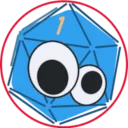This game is older than I am. My parents had (and probably still have) the original version, and I have fond memories of learning deduction using it. This is based on similar pen-and-paper games like Cows and Bulls, and modern word game players will find it similar to wordle, except it uses colored pegs instead of words. It seems the designer, one Mordechai Meirovitz, had difficulty selling the idea to game publishers, but when a small British company called Invicta Plastics bought the rights and made some improvements for retail, it quickly exploded in popularity. Unfortunately, the company became insolvent and its assets were liquidated in 2013.
The box art depicting an enigmatic man and glamorous lady reveals nothing about the game itself, but it definitely catches the eye. I cant get an exact date of production, but this copy is still probably from the early 1980s. The instruction booklet is marked 1972. The box advertises their "game of the year" award (1975?) and a "Queen's Award for Export Achievement." The rules booklet also mentions Word and Number editions of the game which seems to have been published in 1976, but not the electronic version of 1979, although the box does mention that as well as some later editions.
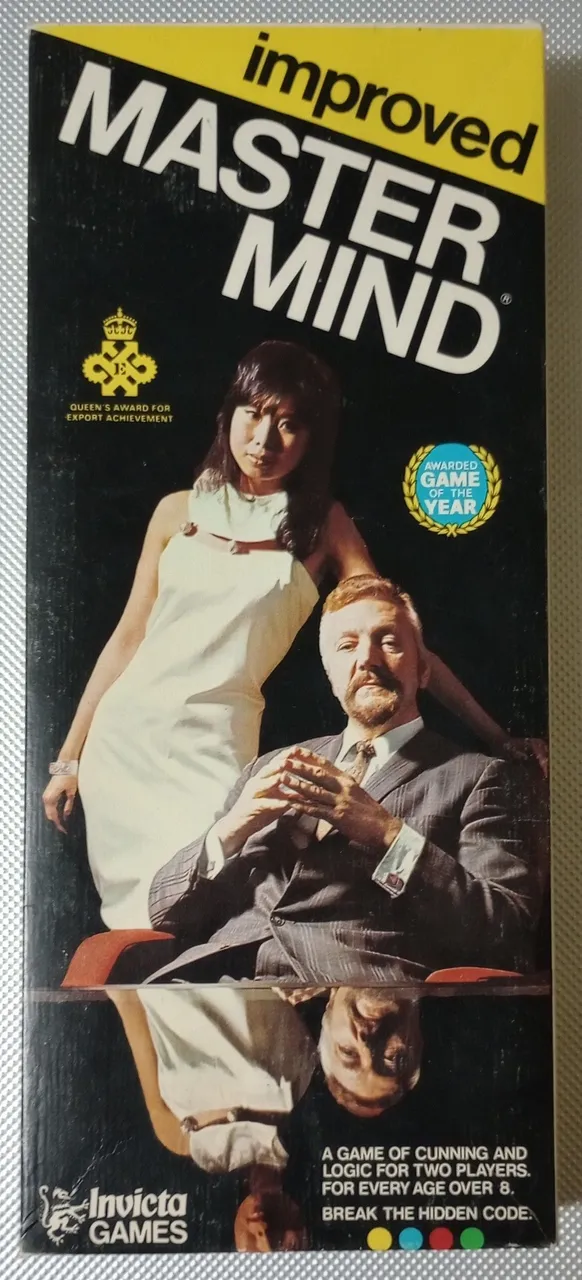
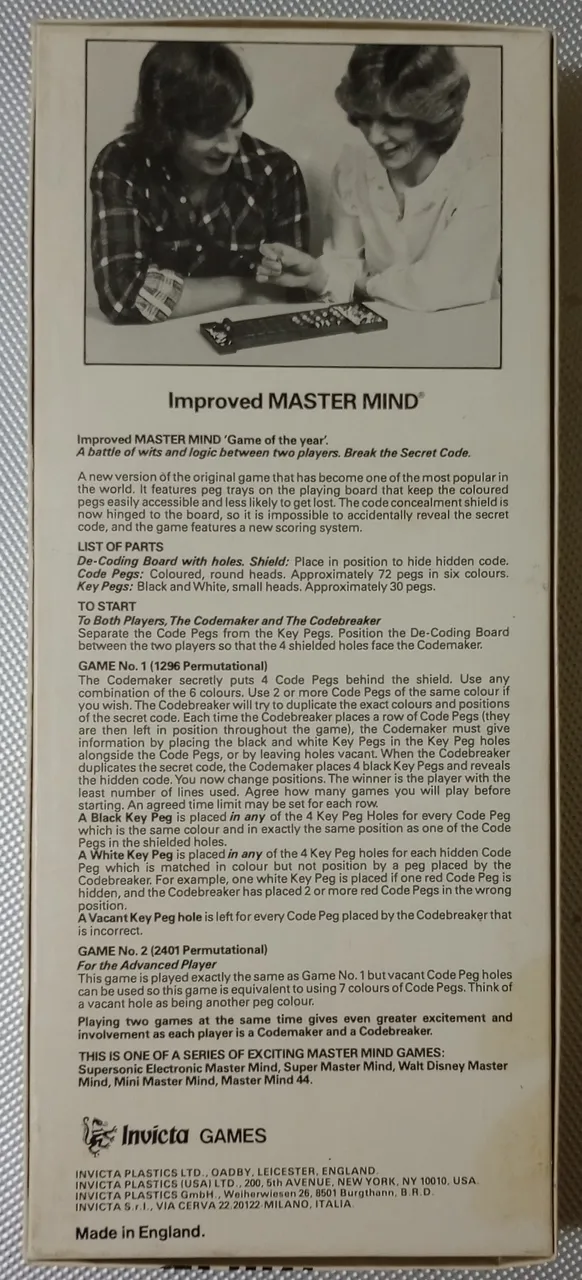
There's also an interesting story about the pair from the cover.
The back of the box shows the game and the rules. These rules are, like many good games, easy to learn. In fact, it since it is entirely unnecessary to speak, this game was promoted as ideal for the deaf. The booklet inside is almost entirely superfluous, but it has ten different languages, so it overcomes international barriers as well.
As a side note, the rules booklet lists Invicta Plastics Ltd., Oadby, Leicester, England and other Invicta distributors in New York City, Nurnberg B.R.D. (That is how the city is spelled, and Bundesrepublik Deutschland was West Germany at the time), Milan, and Tokyo. I find it odd to not see Japanese rules among the ten languages in the booklet. The nod to pre-reunification Germany also hints to how much the world has changed in my own lifetime, since I was born in the Reagan era before the end of the Cold War and the fall of the Soviet Union.
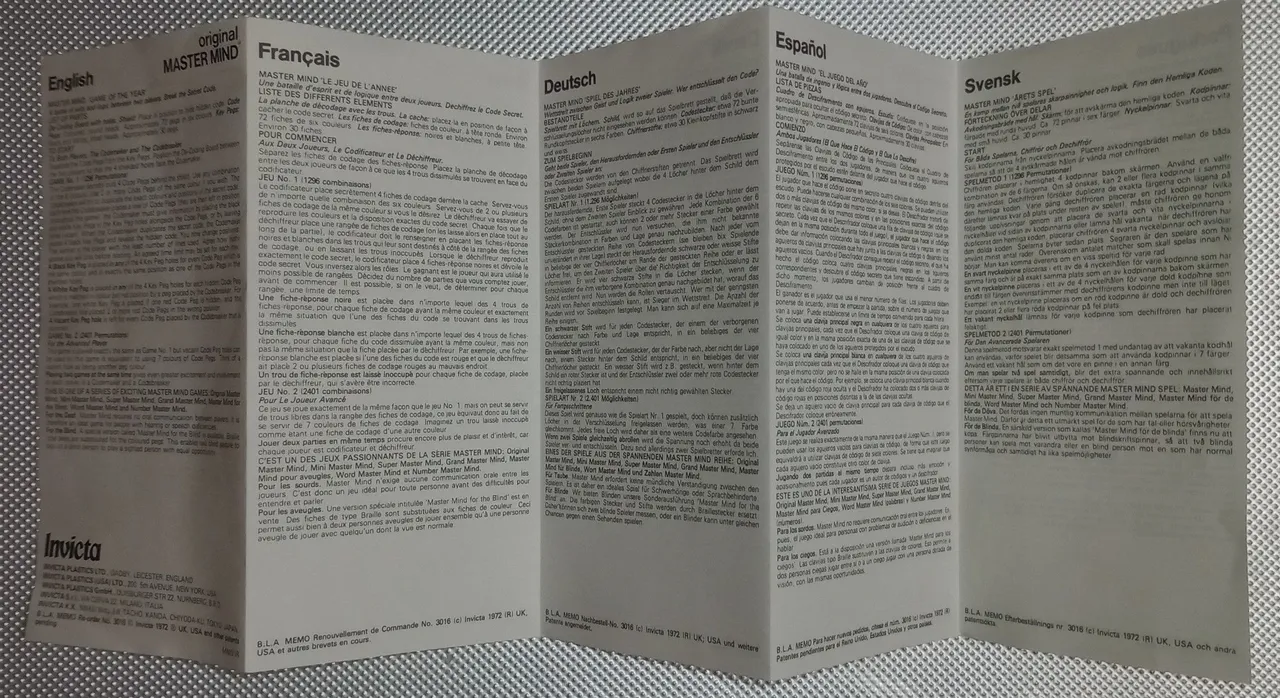
Part quality is nothing special, but everything is functional. Surprise, surprise, everything is molded plastic. It shares everything except the improved board with the old family copy. The changes are the trays molded into the board at either end for the pegs, a row of point-tracking holes on one side of the board, and a hinged code concealment shield. The plastic code pegs remain colorful decades later, but also still have some flashing from a hasty production process. The smaller response pins are a softer compound, and the only issue here is how easy it is to lose them forever if they fall onto the floor, especially for a game made in the era of shag carpet.

Rules Overview
The codemaker chooses 4 pegs to make a secret code. There are six peg colors to create a code: red, yellow, green, blue, black, and white in this edition. Duplicate colors are allowed. An optional advanced rule treats an empty space as a 7th color.
The codebreaker then attempts to guess the hidden combination. Small black and white pegs are used to mark the results: white means a correct color peg was used in the guess, while black means a peg is both the correct color and position.
Once all four correct colors and locations are deduced by the codebreaker, the codemaker places four black pegs and reveals the result and earns points for how many tries the codebreaker needed. If the codebreaker fails to solve the puzzle on the 10th row, the codemaker earns 11 points (10 +1 bonus point).
Example Game
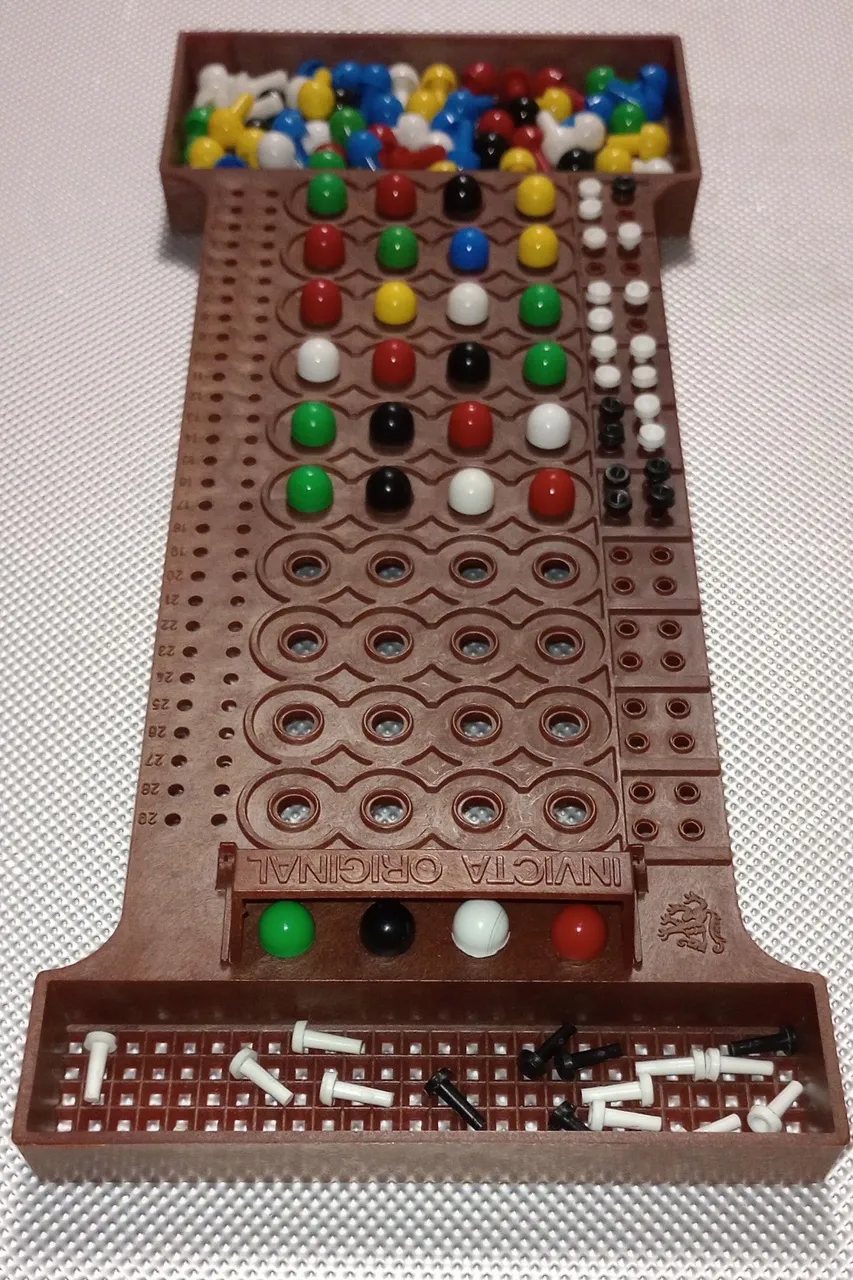
You can see how this worked in a game I played with The Mother Thing during a Sunday afternoon break.
Her first guess included green in the correct space, and red and black in the wrong spaces. Yellow was not in my code at all.
Her second guess left yellow alone and tried adding blue instead of black, but she moved green to the wrong place.
In her third guess, she went back to yellow and jumbled everything.
By her fourth attempt, she was pretty sure about the colors, and guessed right.
Two more turns revealed the correct order as well. Not bad for someone who insisted she needed a nap to really tackle this puzzle! I would have earned a mere 6 points if we were playing toward a given score.
Bottom Line
This game is perfect for people who like to analyze a problem deductively, so if you play sudoku or chess, this might be right up your alley. I would also recommend this for homeschoolers trying to teach logic to their kids. The box recommends it for "every age over 8," and I think that's fair. Kids learn, the elderly maintain their mental elasticity, and everyone has fun if this is your idea of a good time. You could buy it new, but I think there is a certain charm (or just my own nostalgia) to this particular original Invicta manufacturing era if you shop for used copies. It's a simple enough project a home woodworker could make a very nice handmade version, or you can even 3D-print it.
